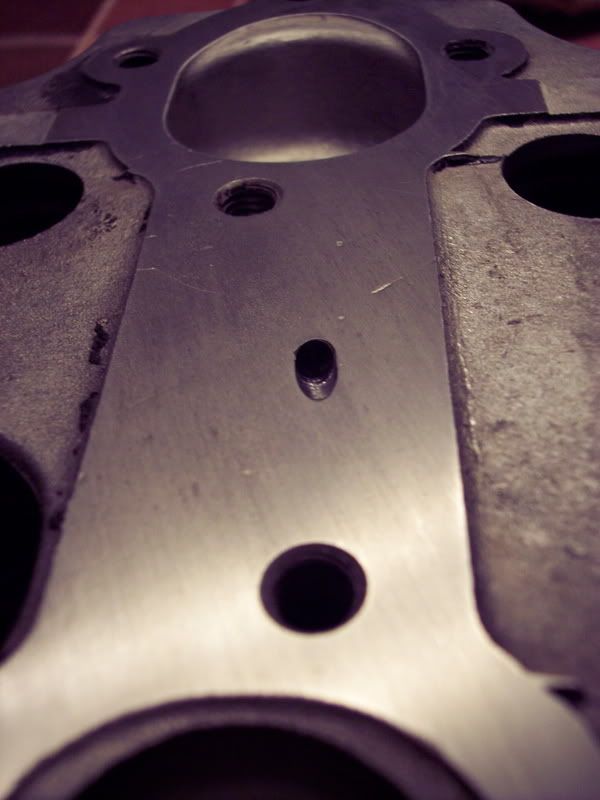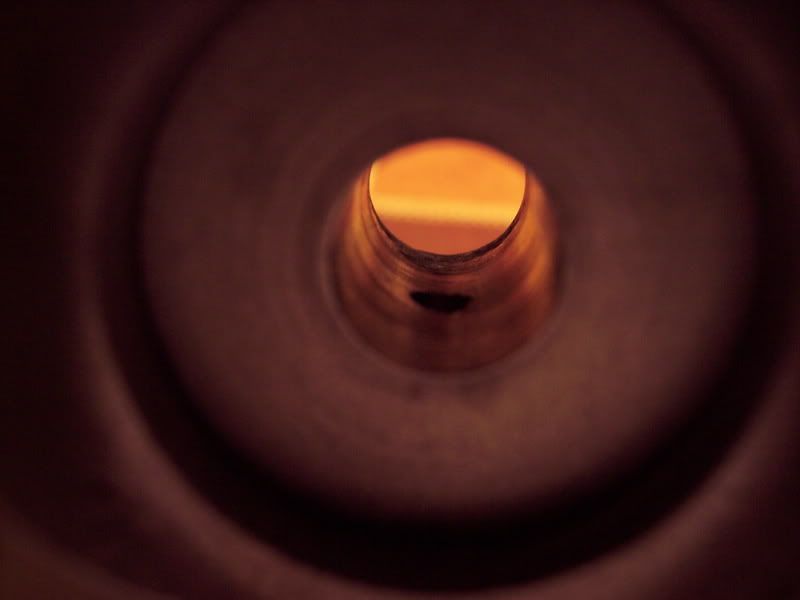 |
 |
 |
 |

|

|
|
|
|
|
|
Registered
|
Valve stem seal - teflon og rubber (viton) ?
Which are the recommended valve stem seal to use.
Teflon Or the rubber, viton one |
||
|
|
|
|
abit off center
|
I like the viton, the Teflon have too much drag on the valve stem for me.
__________________
______________________ Craig G2Performance Twinplug, head work, case savers, rockers arms, etc. |
||
|
|
|
|
Registered
Join Date: May 2002
Location: Portland, Oregon
Posts: 12,710
|
Also from a materials standpoint, Teflon tends to creep more than Viton.
__________________
Harry 1970 VW Sunroof Bus - "The Magic Bus" 1971 Jaguar XKE 2+2 V12 Coupe - {insert name here} 1973.5 911T Targa - "Smokey" 2020 MB E350 4Matic |
||
|
|
|
|
Registered
Join Date: May 2008
Posts: 731
|
My machine shop likes teflon, he thinks that the viton seals off the oil to much preventing lubrication of the valve stem.
|
||
|
|
|
|
Registered
|
I have used the white Teflon seals for a long time on both street and race engines.
Depending on the type of valve guides you use, the seals may be too efficient. With Bronze guides of the non-knurled variety, I score the inside edge of the seal with a 3 cornered file in one place, and place that score on the top of the assembly ( 12 O'clock) so that oil will get into the guide. It's a judgement call as to how much of a score to make, small to keep the guide lubed, or bigger to burn lots of oil. I find with my file (years old) that one stroke does it. Hope this helps Bob
__________________
Bob Hutson |
||
|
|
|
|
Registered
|
I have replaced the exhaust side with a phosphorus bronze knurled valve guide, the intake side has the original non-knurled one.
Would you suggest different seals for these guides? I am a bid afraid of scoring too much on the teflon. Too much as you said would be like having an old worn out seal. |
||
|
|
|

|
|
Registered
Join Date: Jul 2005
Location: Atlanta
Posts: 1,241
|
+1 for viton. teflon is just too hard and scrapes off too much oil
__________________
No physical quantity completely explains its own existence |
||
|
|
|
|
Registered
Join Date: May 2004
Location: Boulder, Colorado
Posts: 7,275
|
Why bother with seals at all on the exhausts? Not much negative pressure acting on them, is there? And the oil has to go uphill.
|
||
|
|
|
|
abit off center
|
If you leave the exhaust seal out then you want to complete the mod!
 
__________________
______________________ Craig G2Performance Twinplug, head work, case savers, rockers arms, etc. |
||
|
|
|
|
Registered
Join Date: May 2004
Location: Boulder, Colorado
Posts: 7,275
|
Is that the 935 modification? Goes from the intake valve spring area? But through a hole in the exhaust guide? To help cool the exhaust valve?
|
||
|
|
|
|
abit off center
|
The passage from the intake has not been milled yet, have you tried it? this is just a mock up head for the jig.
__________________
______________________ Craig G2Performance Twinplug, head work, case savers, rockers arms, etc. |
||
|
|
|
|
Max Sluiter
|
Yes, goes with a finned guide.
 
__________________
1971 911S, 2.7RS spec MFI engine, suspension mods, lightened Suspension by Rebel Racing, Serviced by TLG Auto, Brakes by PMB Performance |
||
|
|
|

|
|
Registered
Join Date: May 2004
Location: Boulder, Colorado
Posts: 7,275
|
Flieger - ever since I first read Anderson in the 1980s I have wondered where that extra oiling passage goes. I can see that it takes some of the oil that accumulates in the intake area, and sends it by gravity down somewhere toward the exhaust.
Where the guide with the finned upper part is. Your picture of the guides makes it appear that there are two crosswise holes in the exhaust guide, one down in the cylinder head part, and one in the protruding finned part. Is that so? So the drilling takes oil right into the heart of the guide bore? A guy would have to be very careful with the Loctite 574 with this setup. Tricky to miss the stud and have the drilling meet the hole in the guide. Or is that a guide which was pulled out, and the drilling is done in situ? And the drilling passes under the bottom of the stud? I have wondered why the open groove angles, rather than running down the center. Because that stud is in the way of a mill? I'm not sure this is something I need to try for a normally aspirated engine, is it? |
||
|
|
|
|
Max Sluiter
|
Its not my photo. You might find the answer here: Reseal for sure, Top end machine work? K27Turbo rebuild?
__________________
1971 911S, 2.7RS spec MFI engine, suspension mods, lightened Suspension by Rebel Racing, Serviced by TLG Auto, Brakes by PMB Performance |
||
|
|
|
|
Registered
Join Date: May 2004
Location: Boulder, Colorado
Posts: 7,275
|
Thanks
Lite75/LSD seems to be the owner of the head in the picture, and said the drilling goes midway down the valve guide. Which is about the only place it could usefully go, because the exposed part of the guide - the part finned in the 935 - can't be reached through the spring shims and cup. If the finned part has holes, doubtless that is to get yet more oil to the valve stem. Just the opposite of what valve seals do! |
||
|
|
|